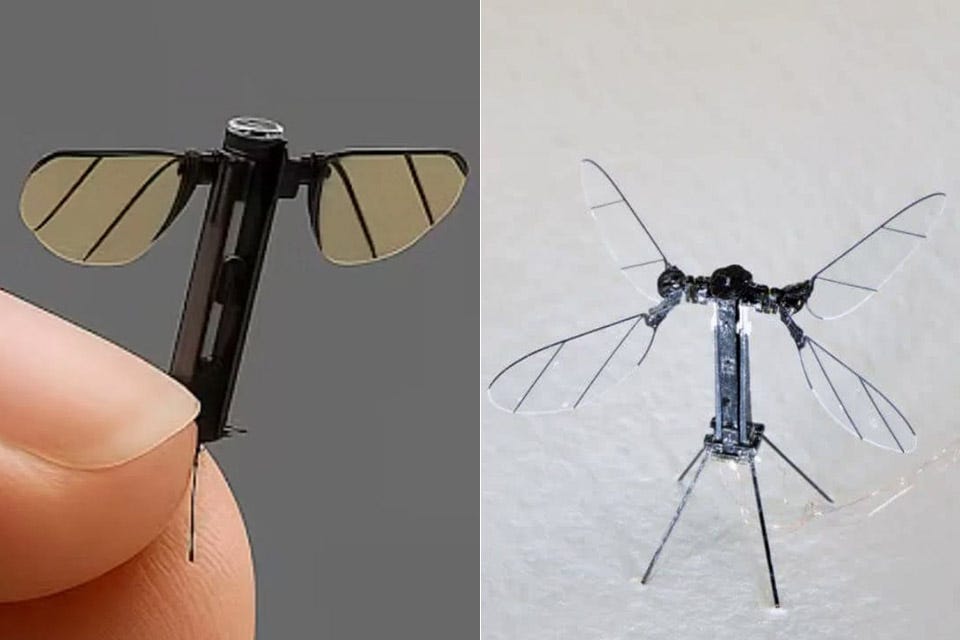China Just Made Two Tech Breakthroughs You Need to Hear About
These breakthroughs in Advanced Chip making and Drone Warfare will change your conceptions of what is possible In each respective field
If you want to see what the future of the world looks like, you need to come to China. Every day new technologies are emerging and two of China’s latest inventions are going to change the future of the chip and drone industry.
China just unveiled the first parallel optical computing chip, ‘Meteor-1’. As traditional chips hit fundamental physical limits at mind-bendingly small sizes, Chinese scientists have developed chips that use light to perform an enormous number of operations at the same time. Using light has major advantages, such as ultra-high speed, broad bandwidth, low power, and minimal latency, positioning it to overcome traditional barriers. Researchers from Shanghai Institute of Optics and Fine Mechanics (SIOM), and Nanyang Technological University (NTU), Singapore, reported:
“This achievement enables a 100-fold increase (and even beyond) in optical computility through ultra-high parallelism without scaling up the chip size, offering a novel technological pathway for future optical computers.”
The chip achieves a theoretical peak computing power of 2,560 TOPS (tera-operations per second) at 50GHz optical frequency—performance comparable to NVIDIA’s advanced GPUs.
This is just the latest field where Chinese scientists have been able to overcome western sanctions and reliance, offering novel solutions to 21st-century technological challenges. Breakthroughs like these in various industries have nearly erased the notion that Chinese scientists are incapable of innovating or are merely copying from the West. Certainly, this is no longer the case in the modern day.
Major technological companies like Taiwan’s TSMC and America's NVIDIA have dominated high-end microchip manufacturing for years. But these developers are running into limits in innovating their traditional microchips—not due to any financial means, but through literally approaching fundamental physical limits of current chip designs. These limits come from heat build-up, quantum effects, and unsustainable power consumption.
Over decades, this traditional chip construction has been refined year after year, creating much smaller and more efficient chips. The innovation for these chips in this traditional capacity is reaching its dead end.
Much like China’s relationship with the automotive industry, Chinese researchers are taking an alternative route. When China developed the industrial capacity to create their own automotive brands in the early 2000s, they were faced with the daunting task of competing with established Japanese, Korean, European, and American brands—each with decades of car-building experience. Instead, China decided to go all in on electric vehicles, which at the time had very few serious contenders or investment. Through being a first mover and investing heavily into electric vehicles, China was able to dominate the market at the level it does today.
We have also seen alternative innovation coming from China this year with Deepseek’s method of creating large learning models that require a fraction of the cost that ChatGPT requires. Chinese scientists have also pursued noticeably different designs from their western counterparts in their fusion and molten salt reactor designs. The field of ultra-advanced chip design is no different.
The second Chinese breakthrough comes in the form of a mosquito-sized drone designed for covert military operations. This barely visible drone shockingly mimics the appearance of a small insect, featuring two tiny wings with a leaflike structure attached to the sides of the stick-shaped body, along with three hair-thin “legs.” Prototypes with four wings, two of which move horizontally on each side of the body, have also been reported.
These are just the latest designs emerging from China’s dominance in the drone field, which has long been established since the technology’s inception. Military concepts in China range from these tiny surveillance drones to more ambitious projects that until recently were only ideas in science fiction. These include mockups of swarms—potentially thousands of medium-sized drones—launched from a larger "mothership." There are even designs for waves of aquatic drones that can dive deep beneath the sea to seek out submarines and other naval targets.
While it’s natural to feel concern about these more efficient and potentially terrifying new methods of warfare, many have drawn comparisons between China’s rapid development of drone technology and the country’s history with gunpowder.
China is credited with being the first nation to discover and utilize gunpowder as a technology. However, unlike Western nations, who primarily used it for military purposes, China initially associated gunpowder mostly with fireworks. This focus on non-military applications proved to be a significant vulnerability, as technologically superior Western powers took advantage, using gunboat diplomacy to force concessions on China during the “century of humiliation.”
China is determined not to make the same mistake with drones. While they have already proven capable of exceeding Western military applications, China has been by far the largest and most successful producer of civilian drones. These civilian applications include awe-inspiring aerial drone shows, agricultural innovations, and even becoming the United States’ primary provider of fire-fighting and search-and-rescue drones.
These two breakthroughs are just the latest in what seems to be a constant supply of technological disruption stories coming from China. Stay tuned as we continue to bring you the latest updates from China!








What's good for China is good for the civilized world. What's bad for the U.S. is usually good for the civilized world. It looks like we got two birds with the same stone here. Thanks, Cyrus!
This is the equation:
China's technical advancement is equal = to or greater than world peace.